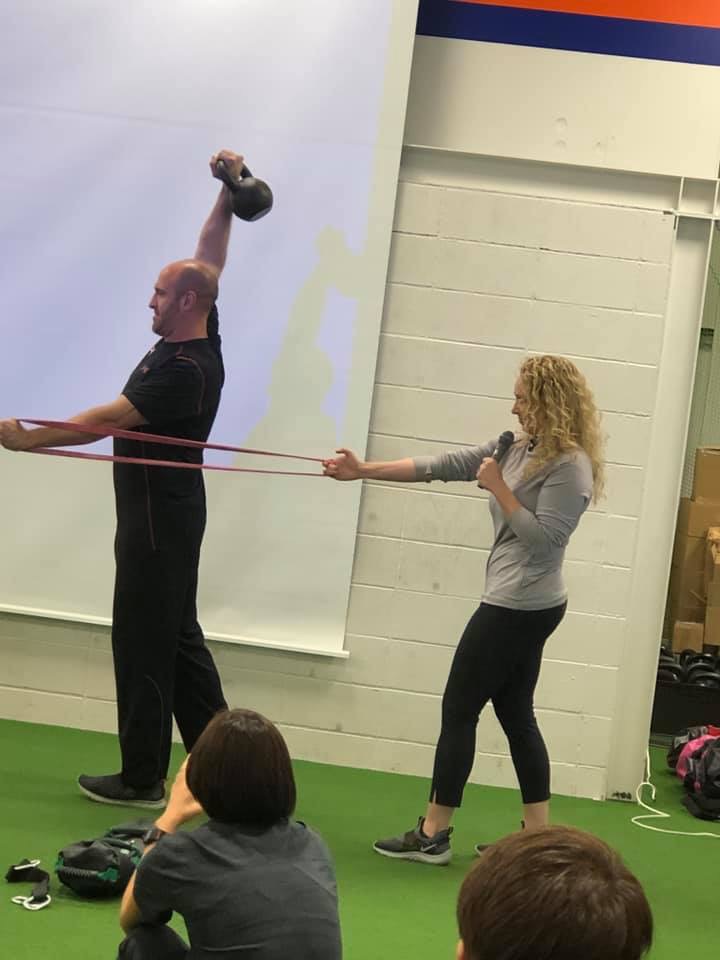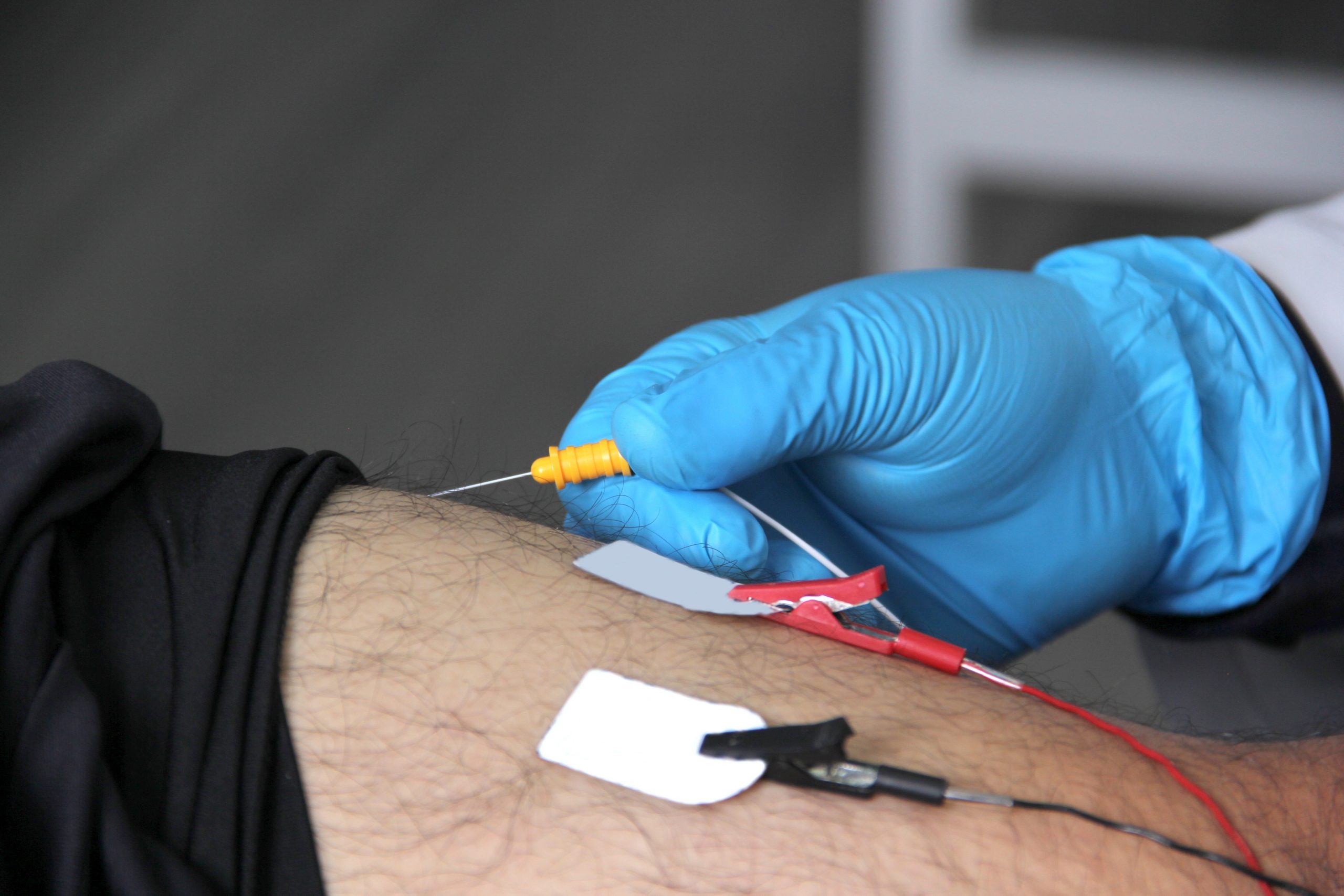Why Higher EMG Isn’t Always Superior in Exercises
2024-09-27
Jessica Bento, Physical Therapist (Creator DVRT Restoration Certification, DVRT Rx Shoulder, Knees, Pelvic Control, & Gait Courses)

Electromyography (EMG) is a technique used to evaluate and record the electrical activity produced by skeletal muscles. It is commonly employed in exercise science to assess which exercises effectively activate specific muscle groups. While higher EMG activity can indicate a greater level of muscle engagement, it does not necessarily mean that these exercises are superior for all fitness goals.

I see it all the time in the world of social media. People claiming that this exercise or that exercise is better simply because it has higher EMG activity, it was something we were even taught back in the day in PT school, but with more and more research coming out we need to start looking at the bigger picture and realizing that just because an excise has high EMG activity does’t mean that its a better exercise.
As physical therapy Gary Gray has said, “Is the muscle screaming or singing?” Do we really want an injured muscle the be at a maximal contraction or do we want it to perform as its meant to function? No muscle ever works alone so do we need to really be focused the execs that has the highest EMG activity or the exercise that trains that muscle how it actually functions with the rest of the surrounding muscles and chain.

The Basics of EMG
EMG measures the electrical signals that occur during muscle contraction. In the context of exercise, researchers often use EMG to compare the muscle activation levels of different exercises. For example, an exercise that shows higher EMG activity for a particular muscle group might be perceived as more effective for developing that muscle. However, this interpretation can be misleading.
View this post on Instagram
Limitations of EMG Activity as a Sole Indicator of Exercise Efficacy
1. **Variability in Muscle Activation**: While higher EMG readings indicate greater muscle activation, they do not account for the functional capacity or the specific goals of an individual. A study by Coyle et al. (1991) found that muscle activation does not always correlate with strength gains or functional improvements. An exercise that produces high EMG activity may not lead to better performance in real-world activities or sports.
2. **Different Training Goals**: EMG is often used to determine which exercises are best for hypertrophy (muscle growth), strength, or endurance. However, just because an exercise elicits a high EMG response does not mean it is optimal for every goal. For instance, a study by Schwanbeck et al. (2009) showed that while the squat produced high EMG readings in the quadriceps, other exercises like lunges were equally beneficial for muscle development and functional strength, emphasizing that exercise selection should align with individual fitness goals.
3. **Exercise Complexity and Coordination**: Compound movements, which often show lower EMG activity for specific muscles compared to isolation exercises, are crucial for overall strength and functional fitness. A study by Gentil et al. (2015) highlighted that exercises like deadlifts and squats engage multiple muscle groups and promote neuromuscular coordination, which is essential for athletic performance, despite showing lower EMG activity in isolated muscles.
4. **Training Adaptations**: As individuals adapt to training, the relationship between EMG activity and strength gains can change. A study by Aagaard et al. (2002) demonstrated that strength gains could occur without a corresponding increase in EMG activity due to neural adaptations. This suggests that focusing solely on EMG readings may overlook essential aspects of strength development.
5. **Risk of Overtraining and Injury**: Exercises that produce high EMG activity can sometimes lead to overtraining or injury if performed excessively or without proper technique. A study by Behm and Sale (1993) emphasized the importance of technique and programming over merely selecting exercises based on EMG activity. Thus, exercises with lower EMG activity might provide safer alternatives that still promote muscle growth and strength.
View this post on Instagram
While EMG activity is a valuable tool for assessing muscle engagement during exercises, it should not be the sole criterion for determining the superiority of one exercise over another. Higher EMG readings do not guarantee better strength gains, functional improvements, or safety.
In conclusion, while EMG is a useful measure of muscle activation, it should be interpreted within a broader context of fitness and training goals. Learn MUCH more how we build strength and mobility that really makes a difference in our workouts by attending our special online Fascia Training Masterclass HERE! Get CEUs and a FREE $30 gift card to Perform Better to invest in better solutions.
View this post on Instagram
References
– Coyle, E. F., Martin, W. H., & Joyner, M. J. (1991). Endurance exercise performance: the physiology of champions. *Journal of Applied Physiology*, 70(1), 1-7.
– Schwanbeck, S., Charles, A., & Worrell, T. (2009). The effect of resistance training on muscle activation in the squat and lunge. *Journal of Strength and Conditioning Research*, 23(7), 2054-2060.
– Gentil, P., & Bottaro, M. (2015). Comparison of muscle activation between different resistance training exercises. *Journal of Sports Science & Medicine*, 14(3), 588-593.
– Aagaard, P., Simonsen, E. B., & Andersen, J. L. (2002). Increased rate of force development and neural drive of human skeletal muscle following resistance training. *Journal of Applied Physiology*, 93(4), 1318-1326.
– Behm, D. G., & Sale, D. G. (1993). Velocity specificity of resistance training. *Journal of Strength and Conditioning Research*, 7(2), 131-142.
© 2026 Ultimate Sandbag Training. Site by Jennifer Web Design.







